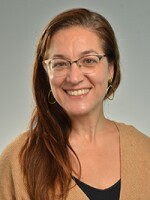Julián Zugazagoitia came to Kansas City in 2010, to take a job as CEO and director of the Nelson-Atkins Museum of Art. The new guy from Mexico by way of New York and Paris made a fast impression as a lanky intellectual with a worldly resume and a lot of energy.
The Midwest made an equally large impression on him.
"Coming to the Midwest definitely was as foreign a country as I have ever been," he jokes.
Kansas City initially felt like a tiny village.
"There’s only 2 million inhabitants [in the metro area]," he says, still radiating shock. "You know, I was born in a city that I think has like 30 million or 40."
There was also this baffling concept known as quality of life. He'd only read about that notion before coming to Kansas City.
"In many of the cities where I'd lived, that doesn't exist."
Being an outsider isn't something Zugazagoitia particularly minds. That's been his vantage point all his life.
He was born in Mexico to a family of refugees from Europe — his grandparents fled Nazi Germany on one side, and Franco and the Spanish fascists on the other. His paternal grandfather was killed for documenting the Spanish Civil War, as a journalist. His maternal grandmother, "a force of nature," fled Berlin, then started a career as an actress in Paris before that city was occupied by Nazis.
Both grandmothers got on the first boat they could leaving Europe. Both boats went to Mexico, a country that welcomed them.
"I feel deeply Mexican, but ... " Zugazagoitia says of his heritage. "At the same time, that is not something you internalize, growing up. You’re just there."
He didn't think much about his identity until he was twelve. That's when he spent a year in England to study English.
"That was the first time I was treated like a foreigner. I was called names," he recalls.
Later, he returned to Europe, this time to go to college in Paris. He met people from other Latin American countries who were also living abroad, and came to enjoy seeing himself not only as Mexican, but also as Latino.
He liked being a part of a vast cultural heritage, in dialogue with people from many different countries. That's a sensibility he carried with him to New York, where he says that being a combination of nationalities and ethnicities was the norm.
"All of the sudden in New York, I feel that having a very mixed-baggage heritage is what everyone else has. It’s so comfortable," he says. "Even our kids, my wife being French, my being Mexican, in the schools, everyone has dual or triple identities, you know? To the point that a friend of my son was the exception, he’s American-American. And we called him like that, you know, Texan-New Jersey heritage."
So it was a big moment for him, not just professionally but also personally, when he was hired as director of El Museo del Barrio, a Harlem museum rooted in Puerto Rican tradition. It was his first chance to combine his personal history and his career in the arts.
Not everyone was convinced. Shortly before his tenure began, he went to the museum for an opening, where he intended to introduce himself and say a few words about the art. As he was putting the final touches on his planned remarks, he was informed that people outside in the street were protesting the hire of a non-Puerto Rican director. They were hanging out buttons and leaflets that said, "We're watching you."
He decided to greet the crowd anyway, against the advice of his team, figuring he was going to have to face this sooner or later. Might as well be sooner. So he milled about among the protestors, and someone gave him a protest pin. Then he stepped up to the podium.
"When you're a museum director, one of the hardest things when you go to talk is getting everyone to be quiet first. That was the first time I had no problem," he says. "That was a scary moment."
Fueled by adrenaline, he ditched his notes and reached instead for that protest button, which he placed on his jacket. He welcomed the protestors directly, promising to listen to their concerns.
"The same people protesting when I came were the ones who were very sad to see me leave, and that I took as the biggest compliment," he says.
Art and museums have been Zugazagoitia's life, but he also knows that there's a fine line between art and reality. That's a lesson he learned at a young age when his mom, an actress in Mexican telenovelas, played a character who died onscreen. He was six or seven years old and didn't know it was pretend. When his mom came home, he was inconsolable.
"That day, everything was explained: Santa Claus doesn’t exist, Superman doesn’t fly. I got a very clear reality check at that moment. I think deeply that has a lot to do with how I see also life. Between fiction and reality. I know very well that representation is one thing, and reality is completely different."
Portrait Sessions are intimate conversations with some of the most interesting people in Kansas City. Each conversational portrait is paired with photographic portraits by Paul Andrews.
Gina Kaufmann is the host of Central Standard and Midwesternish. You can reach her on Twitter.



